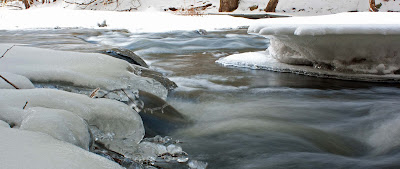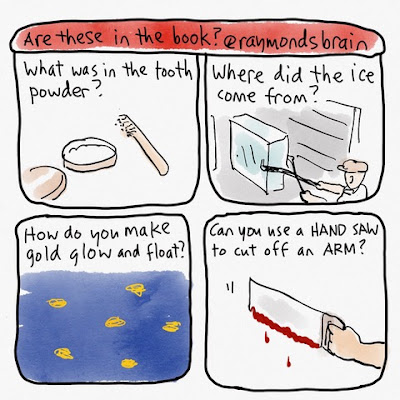Water, the Magic Act of the Universe
by Nina Munteanu
Water is H2O, hydrogen two parts, oxygen one, but there is also a third thing that makes it water and nobody knows what it is.—D.H. Lawrence
I’m a limnologist. Like other water scientists, I study the properties of water; how it behaves in a watershed. I help manage water in our environment; its flow, distribution, storage and quality. I look at how water changes the landscape, carving out huge valleys, forming deltas at river mouths, and polishing pebbles smooth on a lakeshore. I investigate the effects of its contamination by toxins, organic pollutants and disrespect. In its solid form, water has scraped out huge swaths of land and formed some of our largest lakes, dropping moraine in places and melt water from ice blocks elsewhere. In its gaseous form, water controls climate and weather.
And yet, what do I and my fellow scientists really know about water?
Water is the most common substance on Earth. Chemically, the water molecule is basically two atoms of hydrogen joined to one of oxygen. For something so “simply” made, water is pretty complex; the configuration of its building blocks produces a molecule with unusual and almost magical properties. Water scientists have been disagreeing for the past fifty years over how water molecules arrange themselves in a liquid drop.
Water is weird. It is the only natural substance found in all three physical states (liquid, solid and gas) at temperatures normally found on Earth. Water stores an incredible amount of energy and heat. It is a universal solvent. It can dissolve a large variety of chemical substances like salts, other ionic compounds, and polar covalent compounds such as alcohols and organic acids. It transports all kinds of things from the sediment of the Nile River to the oxygenated blood cells in your arteries. It is the most cohesive among the non-metallic liquids. Water is involved in the structure of DNA.
Water has at least seventy anomalous properties and virtually all are life-giving. Its unique properties make water possibly the most important element of our existence and in ways most of us can’t possibly imagine. Water’s anomalous properties—such as its thermal density, high specific heat, and viscosity—are key to the existence of life. If not for these anomalous properties, north temperate lakes would ice up completely in winter, killing virtually all their aquatic life; lakes and oceans around the world would not mix and stratify, and would fail to provide essential nutrients to aquatic biota. As a gas, water is the lightest known. As a liquid, it is much denser than expected; and as a solid, it is much lighter than expected, compared with its liquid form. Water can be very sticky and very slippery at the same time. Its high surface tension and its expansion on freezing help erode rocks and create soil for plant growth and allow it to travel great distances up a tree to feed its leaves.
Water is a shape shifter. Water responds to and changes the properties of all kinds of things. Water changes all the time; and yet, it has stayed the same over eons. Since the dinosaurs quenched their thirst in the soupy marshes of the Triassic Period millions of years ago, to the rain falling on your house today, the amount of moisture on Earth hasn’t changed.
Scientific studies have begun to show some astonishing properties and behaviours of water. One is that water reacts to—and may even drive some—cosmic phenomena. Laboratory studies with water have shown that it is not always the same. Studies have revealed that water is influenced by shifts in the Earth’s magnetic field or by explosions on the Sun. Of course, most of us know about how the Earth’s great water bodies respond to the movements of the Moon around the Earth in the oceanic tides and the seiches of the Great Lakes. But we are learning that water is far more sensitive and responsive than most people ever imagined. And some suspect that water responds to and is interconnected in some way with all that exists in the cosmos.
Water is made of the first and third most common elements in the universe, hydrogen and oxygen. Water is the second most common molecule in the universe (the most common is hydrogen gas, H2). As ice, water is apparently the most abundant solid material out there, found on comets, planets and moons throughout the universe.
Water arrived on Earth in comets and asteroids some 4.5 to 3.8 billion years ago during a period called the Late Heavy Bombardment. Some form of water was discovered in twenty-three places in the solar system, including the Moon, Mars, Mercury, Saturn, Neptune and Uranus, Saturn’s and Jupiter’s moons. An ocean was discovered under the ice crust of Saturn’s moon Enceladus. Since a hydrothermal vent at the bottom of one of the Earth’s oceans is thought to be the best candidate for where life started on our planet, astrobiologists think Enceladus is a good place to look for alien life.
Water is fundamental to star formation. The sun and other stars like it create the equivalent of 100 million times the water in the Amazon River every second. NASA recently discovered the largest water vapour reservoir around a black hole 12 billion light years from Earth; It contains 140 trillion times as much water as all the water in the Earth’s oceans.
Theodor Schwenk suggested that flowing water acts like a sensory organ through which celestial influences enter the world.
“Water,” says William E. Marks, author of The Holy Order of Water, “may be the connecting interstellar intermediary between all matter in the universe. Just as a thrown pebble sends waves of energy rippling through every water molecule in a pond, changes in any planet or sun may also send waves of energy rippling through every water molecule throughout the universe.”
Magic surges with power and mystery. Magic hides in clear view; it ripples with intrigue. When you look at magic, you see only your reflection, while its depths veil immeasurable possibility.
Magic is water.
Some Cool Weird Water Properties:
Water is sticky. The molecules stick to things, especially each other. This is what gives water its high surface tension and keeps you alive: water can pull blood up narrow vessels in the body, often against the force of gravity.
Water should be a gas at room temperature—but it isn’t; all similar molecules, such as hydrogen sulphide (H2S) and ammonia (NH3), are gases. This is because water’s stickiness (high water tension and cohesion) holds molecules together as a liquid.
Hot water freezes faster than cold water and no one knows why. This phenomenon is known as the Mpemba Effect (named after Erasto Mpemba in 1969).
There are at least 5 different phases of liquid water and 14 different phases (that scientists have found so far) of ice. See the work by Martin Chaplin (ref below).
At -120 °C water becomes ultraviscous, or thick like molasses. And below -135 °C, it becomes “glassy water,” a solid with no crystal structure.
Water exhibits quantum properties such as “coherence” and self-organization.
Water can dissolve more substances than any other liquid including sulfuric acid.
Unlike most other liquids, water expands when it freezes. Water expands by 9% on freezing. This has been crucial to life: lakes and rivers freeze from the top down so even though the Earth has faced successive ice ages, there has always been liquid water for life to continue evolving.
Photographs by Nina Munteanu
References:
Ball P. 2008. “Water—an enduring mystery.” Nature: 452, 291–292.
Ball P. 2008. “Water as an Active Constituent in Cell Biology.” Chem. Rev. 108: 74.
Buzzfeed. “27 Fascinating and Strange Facts About Water.” Buzzfeed.com: http://www.buzzfeed.com/tomchivers/fascinating-and-strange-facts-about-water#.yizEKPM8R
Chaplin, Martin. 2016. “Anomalous Properties of Water”. In: “Water Structure and Science”. Online: http://www1.lsbu.ac.uk/water/water_anomalies.html
Chaplin, M.F. 2003.“Thirty eight anomalies of water, Part 1”. Homeopath. Med. Panorama 11: 12–19.
Chaplin, M.F. 2003. “Thirty eight anomalies of water, Part II”. Homeopath. Med. Panorama 11: 22–28.
Cho, C.H.; S. Singh; and G.W. Robinson. 1997. “Understanding all of water’s anomalies with a nonlocal potential.” J. Chem. Phys. 107: 7979–7988.
Del Giudice E.; M. Fleischmann; G. Preparata; and G. Talpo. 2002. “On the ‘unreasonable’ effects of ELF magnetic fields upon a system of ions.” Bioelectromagnetics 23: 52–30.
Environment Canada. 2011. “Water Basics.” Online: https://www. ec.gc.ca/eau-water/
Marks, William E. 2001. “The Holy Order of Water.” Bell Pond Books. 256 pp.
Munteanu, Nina. 2016. “Water Is… The Meaning of Water.” Pixl Press, Vancouver. 586pp.
Schwenk, Theodor. 1996. “Sensitive Chaos.” Rudolf Steiner Press, London. 232 pp.
Szent-Györgyi, Albert. 1972. “The Living State: With Observations on Cancer.” Academic Press. New York. 124 pp.
Treehugger. “36 Eye-Opening Facts About Water”. Treehugger.com: http://www.treehugger.com/clean-water/36-eye-opening-facts-about-water.html
Voeikov, V.L. and E. Del Guidice. 2009. “Water Respiration—the Basis of the Living State.” Water 1: 52–75.
vonRöntgen, W.K. 1892. “The Structure of Liquid Water.” Annu. Phys. 45: 91.
Xantheas, S.S. 2000. “Cooperativity and hydrogen bonding network in water clusters.” Chem. Phys. 258, 225–231.


















